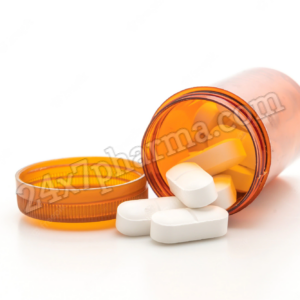How Does Clinopak 300 mg Work?
Clinopak 300 mg contains Clindamycin, which stops bacteria from multiplying by binding to the 50S ribosomal subunit in bacterial cells. This action prevents protein synthesis, which is essential for bacterial growth and survival.
Unlike some antibiotics that kill bacteria directly, Clindamycin acts as a bacteriostatic agent, meaning it inhibits growth and allows the body’s immune system to eliminate the infection naturally. However, at higher concentrations, it can act as a bactericidal agent, effectively killing bacteria.
Clinopak 300 mg is especially useful against anaerobic bacteria, which thrive in low-oxygen environments, making it effective for deep-tissue infections, abscesses, and post-surgical infections.
How to Use Clinopak 300 mg
To ensure the best results, follow these usage guidelines:
- Dosage & Duration: Take Clinopak 300 mg exactly as prescribed by your doctor. The usual dose ranges from one capsule every 6 to 8 hours, depending on the severity of the infection.
- With or Without Food: You can take Clinopak 300 mg with or without food, but taking it with a full glass of water helps prevent stomach upset.
- Do Not Lie Down Immediately: Avoid lying down for at least 10 minutes after taking the capsule to prevent irritation in the esophagus.
- Complete the Full Course: Even if you start feeling better, complete the full antibiotic course to prevent antibiotic resistance and ensure the infection is fully treated.
- Missed Dose: If you miss a dose, take it as soon as you remember. However, if it is close to the next dose, skip the missed dose—do not take a double dose.
- Avoid Alcohol: Alcohol may increase the risk of side effects like stomach upset and dizziness. It is best to avoid alcohol while taking Clinopak 300 mg.
Clinopak 300 mg Side Effects
Like all medications, Clinopak 300 mg may cause some side effects. While most people tolerate it well, some may experience:
Common Side Effects
- Nausea
- Vomiting
- Stomach pain
- Diarrhea
- Heartburn
Serious Side Effects (Seek Medical Attention Immediately)
- Severe Diarrhea (Clostridium difficile Infection): This can cause bloody or watery diarrhea and requires immediate medical attention.
- Allergic Reactions: Symptoms include rash, itching, swelling (especially of the face/tongue/throat), severe dizziness, and breathing difficulty.
- Liver Issues: Dark urine, yellowing of the skin/eyes (jaundice), and unusual fatigue may indicate liver problems.
- Esophagitis: Inflammation of the esophagus can occur if the medication is not taken with enough water.
If you experience any severe or persistent side effects, stop using the medication and consult your doctor immediately.
Warnings & Precautions
Before taking Clinopak 300 mg, consider the following precautions:
- Allergies: Do not take Clinopak 300 mg if you are allergic to Clindamycin or Lincomycin antibiotics.
- Pregnancy & Breastfeeding: Consult your doctor before using this medication if you are pregnant or breastfeeding. It may pass into breast milk and affect the baby.
- Liver & Kidney Conditions: Patients with liver or kidney disease should use this medication with caution, as it is metabolized in the liver and excreted by the kidneys.
- Gastrointestinal Disorders: If you have a history of colitis, ulcerative colitis, or Crohn’s disease, avoid Clinopak 300 mg as it may worsen your condition.
- Drug Interactions:
- Avoid using Clinopak 300 mg with erythromycin, as they can reduce each other’s effectiveness.
- It may interact with muscle relaxants and anesthesia, increasing the risk of side effects.
- Inform your doctor about all medications, supplements, and herbal products you are using.
Frequently Asked Questions (FAQs)
1. Can I take Clinopak 300 mg for viral infections like the flu?
No, Clinopak 300 mg is an antibiotic and only works against bacterial infections. It is not effective for viral infections like the flu, common cold, or COVID-19.
2. How long does it take for Clinopak 300 mg to work?
Most patients start feeling better within 48 to 72 hours of taking Clinopak 300 mg. However, it is important to complete the full course to prevent a relapse.
3. Can I stop taking Clinopak 300 mg if my symptoms improve?
No, stopping the medication early can lead to antibiotic resistance and may cause the infection to return. Always complete the prescribed course.
4. Can Clinopak 300 mg cause diarrhea?
Yes, mild diarrhea is a common side effect. However, if you experience severe, persistent, or bloody diarrhea, contact your doctor immediately, as it may indicate a serious infection.
5. Is Clinopak 300 mg safe for children?
Clinopak 300 mg may be prescribed to children in certain cases. However, the dosage and safety depend on the child’s weight and medical condition. Always follow the doctor’s recommendation.
6. What should I do if I accidentally take more than the prescribed dose?
Taking too much Clinopak 300 mg can cause severe stomach pain, vomiting, and diarrhea. In case of an overdose, seek immediate medical attention.










Reviews
Clear filtersThere are no reviews yet.